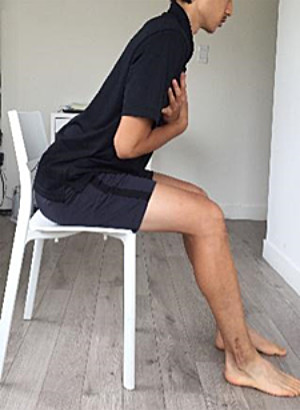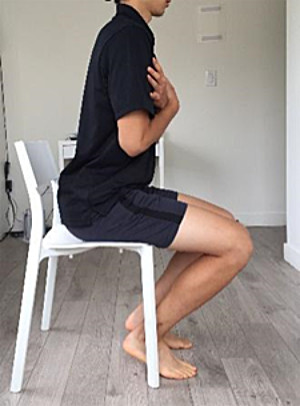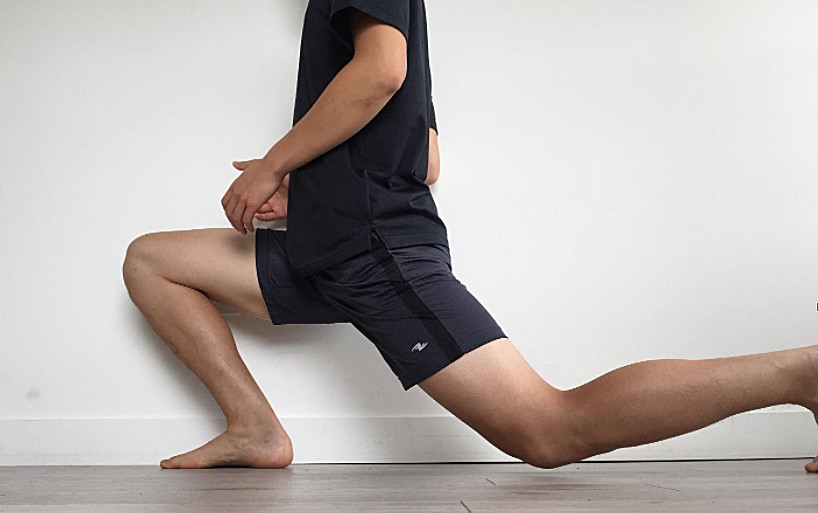by Samuel Yiu, MScPT
Registered Physiotherapist
Synergy Danforth
If you have experienced knee pain while squatting or lunging in the past, you may have read fitness advice to never let your knees go over your toes. While there are specific conditions that may warrant this suggestion, this overarching claim to never let your knees go over your toes simply is not true for many. Suggestions that ostracize one specific movement such as “you should never squat with your knees over your toes” has made many people fearful of squatting or lunging at all. Secondarily, those that are preoccupied with avoiding these movements during exercise are likely to develop further injuries over time as it could result in improper movements and compensations at your low back, hips, and ankles.
The purpose of this blog post is to highlight the benefits of squatting/lunging with knees over toes, and also when may be an appropriate time to take a break from loading into this movement.
Let’s start off by discussing the anatomy and biomechanics involved when squatting/lunging with our knee over toes. For simplicity, I will only focus on anatomical structures located in the front of the knee; the patella (our kneecap) and the quadriceps (muscles in the front of our thigh). The primary function of our quadricep muscles is to extend (straighten) the knee from a bent position. The patella is a sesame-shaped bone which sits under our quadriceps/patellar tendon and functions as a pulley to help the quadriceps generate greater torque (angular force).

The amount of force that our quadriceps can generate often depends on the positioning of our tibia (lower leg) in relation to our femur (thigh bone). Let’s try a quick experiment. I want you to try standing up from a chair with your feet planted on the floor and your knees behind your feet. (See picture 1) Try it now.

Chances are, you bent your hip forward and tried using the momentum of your hips to swing you up to standing. You may find that this movement is quite unnatural. Now, let’s try standing up with your feet positioned right under the front of the chair and knees over the toes. (See picture 2) This time, you likely did not need to bend your hips as far forward and this movement felt more natural. This simple demonstration hopefully helps illustrate just how often we need to position our knees over the toes on a day-to-day basis. Other examples of everyday activities that require us to utilize this movement include walking and going downstairs.

From the example above, we can see that moving our knees past our toes will utilize more of our quadriceps muscles both when extending our knee (coming up from a seated position) and controlling the bend of our knee (lowering into a seated position). By practicing squatting/lunging with your knees over toes, you are allowing the quadriceps muscle to work through its full range of motion and training up more of the muscle’s potential.
One thing to keep in mind is that with more force being produced from the quadricep muscles, there is increased pressure at the knee joint. Structures such as the kneecap are compressed by the increased pull of the quadriceps muscles and there is also an increased load on the patellar tendon (tissue that attaches your muscle to bone) the further the knees bend past the toes. (This concept is likely where the belief that “you should not squat with your knees over toes” originated from.) However, this increased stress is not harmful to your knee if performed with proper execution.
So, why am I advocating that people squat and lunge with their knees over toes? Why should you put increased “stress” at your knee joint? Well, like any movement/exercise, the only way you can get better is to practice. If you avoid loading your knees over your toes, your knees over time may develop less tolerance towards the stress of deep knee bending. This could limit you in participating in activities such as sports, gardening, and playing with your children/grandchildren in a pain-free manner. When we squat/lunge with our knees over toes, over time, we can progressively build greater tolerance to more pressure placed on our knees, reducing soreness when you do activities that place pressure on the knees.
If you are a person who experiences sensitivity/pain from squatting or lunging with your knees past your toes, it could be a sign that your knee is not ready to withstand the forces of that movement at this point in time. However, it does not mean that you will never be able to perform this movement or that doing this movement will further injure your knee. With a proper assessment of your strengths and weaknesses and an individualized strength/mobility training regimen, you will be able to build confidence with movements involving knees over toes gradually!

Samuel Yiu
Registered Physiotherapist
Samuel Yiu is a registered Physiotherapist at Synergy Danforth with special interest in knee pain. If you would like to schedule a consultation with him, you can do so by clicking HERE or you can email him at samuel@synergysportsmedicine.com


